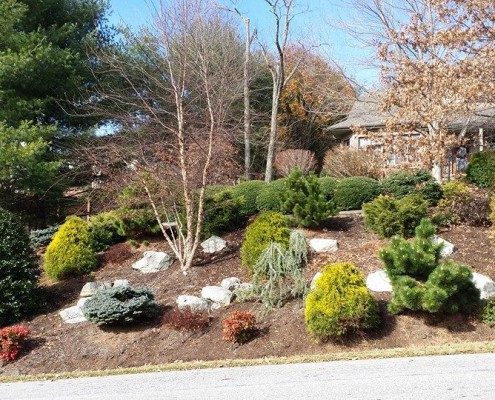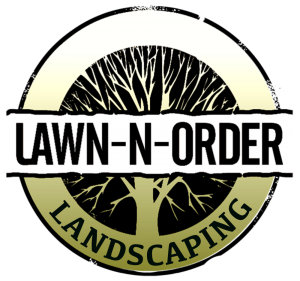Posts
Hillside Gardening: Steep Slope Maintenance & Runoff
/in Drainage, Landscape Design, Landscaping /by Lawn-N-OrderLandscaping On A Steep Slope
/in Conifers, Evergreens, Gardening, Landscape Design, Landscaping, Perennials /by Lawn-N-OrderSteep Slope Erosion Control Options
/in Blog, Drainage, Gardening, Stonework /by Lawn-N-OrderSteep slope erosion control can be a challenge and is a continual source of irritation to newcomers to the mountains of Western North Carolina. Welcome to gardening on steep slopes! The following are some ideas to make the chore not such a dilemma and easier to manage. While it might seem like a challenge, we’ll give some ideas on how to make the most of your hilly gardening venue, so you don’t ever want to move back to the flat land again.
Terracing for Steep Slope Erosion Control
Terracing can be an option to steep slope erosion control. Building retaining walls not only gives more room for gardening but also slows down the water to prevent runoff. The rainwater can be captured, and erosion is kept to a minimum or eliminated. Depending on the height of the slope and grade, will determine the use of terracing.

Placing boulders in the bank as outcroppings can also add to erosion control and add native objects to the landscape.
If terracing isn’t an option or your grade is slighter than most, then other options come into play. Plant selection and certain mulches will retain the soil in place to prevent steep slope erosion. Placing boulders in the bank as outcroppings can also add to erosion control and add native objects to the landscape.
Plants for Steep Slope Erosion Control
Select plants for steep slope erosion control that are drought tolerant since the water will be draining off fairly quickly. This selection should include plants with deep root systems to hold in the soil and add to its drought tolerance. Select trees, small and medium shrubbery, grasses and perennials used will be good coverage to the steep slope turning it into a lush garden.
Mulches for Steep Slope Erosion Control
Mulches that hold together, are coarser and shredded will knit together better than solid chips. Double ground hardwood bark is a favorite since it is from maples and oaks. It is heavy; thus, it doesn’t blow or wash away as easy. It’s staying power is ideal for sloped beds and gardens. A depth of 2-3 inches is recommended to retain moisture and a top dressing for the beds and slopes. Pine straw can be used as well because the needles know together and don’t slide or move on a slope. Some would argue that it’s harder to blow out leaves in the fall so keep this in mind when selecting for erosion control.
If you need some advice on your steep slope, then call a professional to get the job done and keep your precious soil in place and not running out from under you!
Lawn-N-Order Landscaping, Inc.
PO Box 1551
Weaverville, NC 28787


